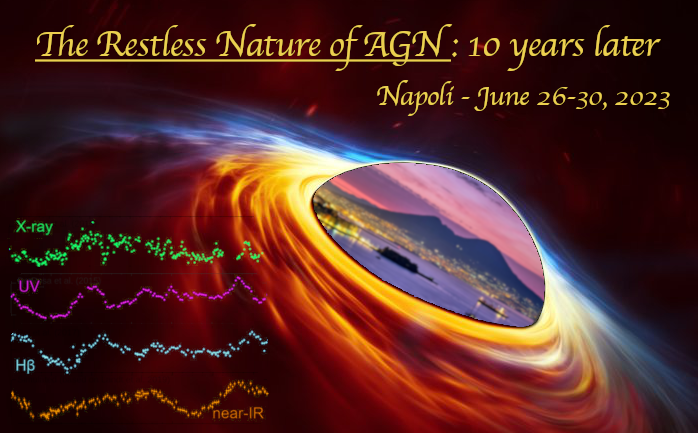Speaker
Description
The quadruply lensed quasar Q2237+0305 at z = 1.695, known as the Einstein cross, has been known for years to be a privileged laboratory for microlensing studies due to very short time lags. The spectra of the image A reveals a strong magnification effect that distorts the broad CIV emission line, while the image D shows no microlensing induced variability. The BLR microlensing is characterized with three observables (indices) calculated from the broad line: $\mu^{BLR}, WCI, RBI$ (Hutsemékers et al. 2019).
We model microlensing by convolving the magnification map with three representative BLR geometries: Keplerian disk (KD), polar wind (PW) and equatorial wind (EW). Variability is modeled by linear motion of a point source over the convolved images. We directly compare for which model parameters the extracted time series match with the observed indices. The preferred geometry is KD and the most likely BLR mean radius is $63\pm20$ light days (for CIV line). We discuss the possibilities of extending our method to other lensed quasars as well as large datasets.

